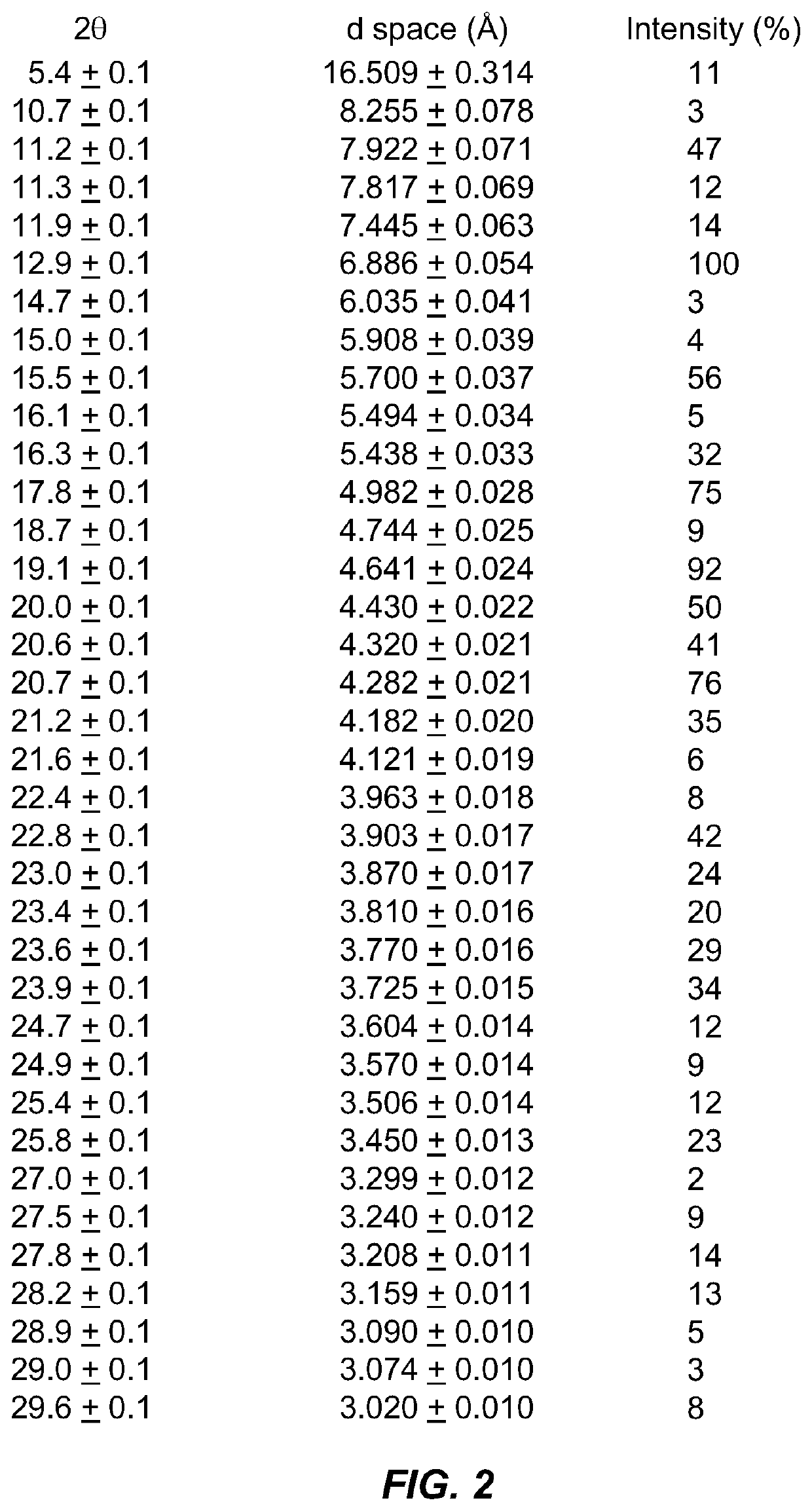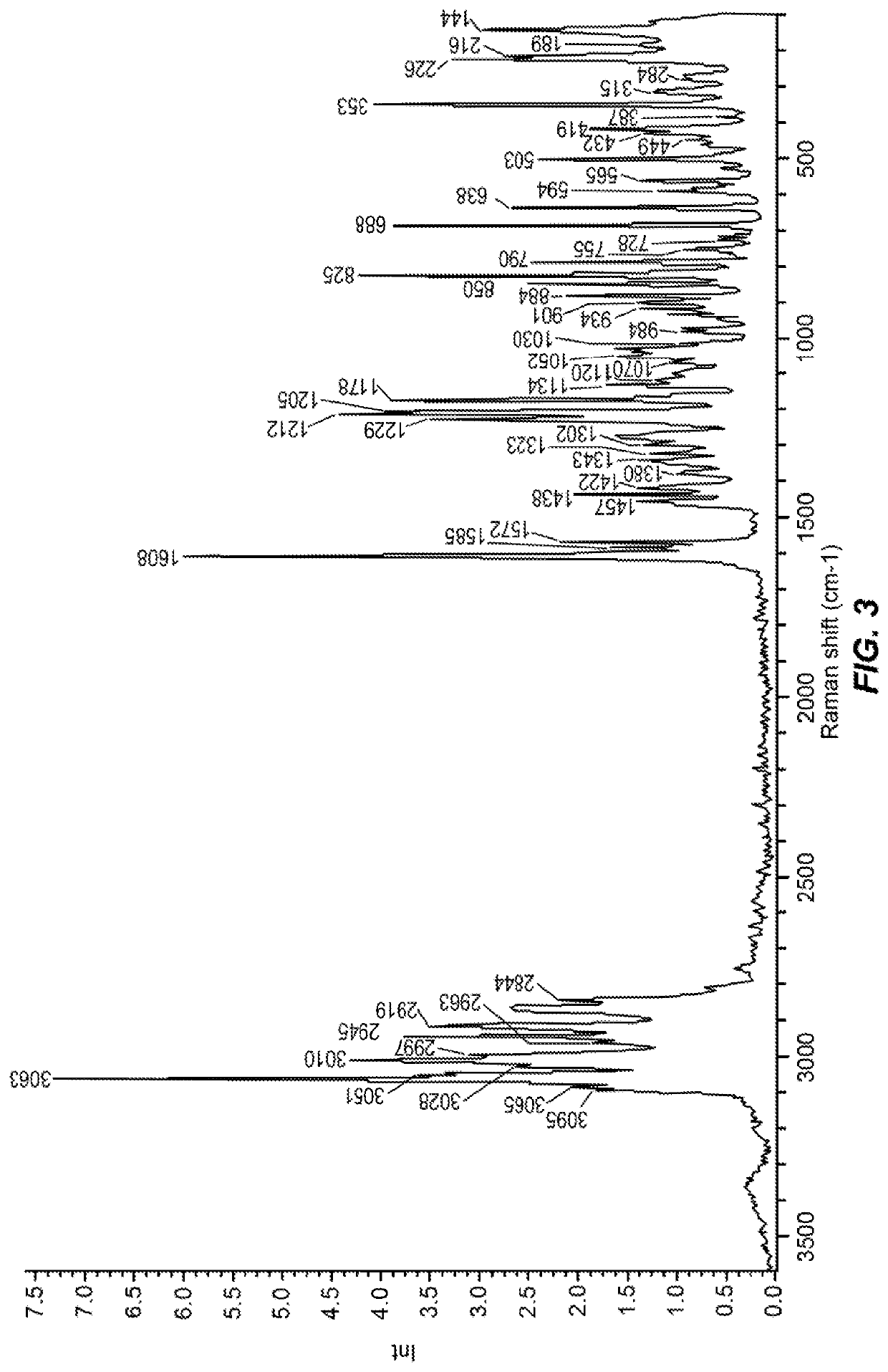Compound for the management of feline diabetes
a technology for feline diabetes and compound, which is applied in the field of compound for the management of feline diabetes, can solve the problems of adverse effects on the owner, inferior to a strategy with less objective efficacy but decreases the owner's anxiety, and increases the health problem of feline diabetes
- Summary
- Abstract
- Description
- Claims
- Application Information
AI Technical Summary
Benefits of technology
Problems solved by technology
Method used
Image
Examples
example 1
f bexagliflozin in Diabetic Mice
[0157]In study 350, the effects of bexagliflozin (as the 2:1 proline:bexagliflozin cocrystal) were examined in genetically diabetic db / db mice. Blood glucose was measured using a glucometer (One Touch Ultra Johnson & Johnson (LifeScan) Blood Glucose Monitoring System). Generally, the blood was obtained from a cut in the tail. When the blood glucose values were higher than 33.3 mmol / L, the upper limit of quantification of the glucometer, two drops of blood were obtained from the orbital plexus and collected in anti-coagulated microcentrifuge tubes containing heparin for subsequent dilution and measurement of blood glucose. The masses of bexagliflozin in Table 1 are approximately ⅔ of the masses of 2:1 composition.
[0158]The animals were dosed daily with the vehicle or proline:bexagliflozin cocrystal by gavage administration for 28 days. Animals were dosed between 10:00 AM and 12:00 PM daily. The body weights were measured every 4 days and the dosage was...
example 2
f bexagliflozin in Diabetic Rats
[0160]In study 338, the effects of bexagliflozin (as the 2:1 proline:bexagliflozin cocrystal) were examined in genetically diabetic ZDF rats. Blood was collected from the saphenous vein of male ZDF rats in Capiject tubes containing sodium fluoride and potassium oxalate (Lot #HA0931; Terumo Medical Corp.) and used to determine non-fasted plasma glucose levels. Plasma glucose levels were analyzed by a colorimetric assay based on hexokinase methodology (Glucose-SL assay: Diagnostic Chemicals Ltd.). Plasma samples required 1:2 dilutions with 0.9% saline according to the manufacturer's instructions prior to analyses.
[0161]Animals were orally dosed by gavage once daily (9:00-11:00 am) with vehicle (10% PEG400) or experimental compound at one of four dose levels (0.067, 0.2, 0.67 and 2.0 mg kg−1) for 28 days. Body weights were measured 3 times per week, and dosage was adjusted accordingly. Food (Purina 5008; Formulab Diet) and water consumption were measured...
example 3
f bexagliflozin on Feline SGLT1 and 2 Transporters In Vitro
[0169]In study 5, a DNA fragment encoding feline SGLT2 was inserted downstream of a cytomegalovirus immediate early protein enhancer / chicken β-actin promoter with a rabbit β-globin intron (CAG promoter) between the SalI and Hind III sites of mammalian expression vector pNL715 (pPB-CAG-SGLT2Cat-IRES-EGFP; Egret Pharma Shanghai, 1118 Halei Road 4F, Zhangjiang Hi-Tech Park, Shanghai China 201203). The plasmid expression cassette was flanked by PiggyBac transposon inverted terminal repeats and contained an internal ribosome entry site (IRES) upstream of an enhanced GFP open reading frame and a bovine growth hormone polyadenylation signal. Plasmids harboring the desired cDNA inserts were identified by restriction enzyme cleavage analysis. A plasmid (pNL717) encoding feline SGLT1 was similarly inserted between SalI and Hind III sites to create pPB-CAG-SGLT1Cat-IRES-EGFP (Egret Pharma Shanghai). A C-to-T transition mutation at posi...
PUM
| Property | Measurement | Unit |
|---|---|---|
| Fraction | aaaaa | aaaaa |
| Fraction | aaaaa | aaaaa |
| Fraction | aaaaa | aaaaa |
Abstract
Description
Claims
Application Information
 Login to View More
Login to View More - R&D
- Intellectual Property
- Life Sciences
- Materials
- Tech Scout
- Unparalleled Data Quality
- Higher Quality Content
- 60% Fewer Hallucinations
Browse by: Latest US Patents, China's latest patents, Technical Efficacy Thesaurus, Application Domain, Technology Topic, Popular Technical Reports.
© 2025 PatSnap. All rights reserved.Legal|Privacy policy|Modern Slavery Act Transparency Statement|Sitemap|About US| Contact US: help@patsnap.com



